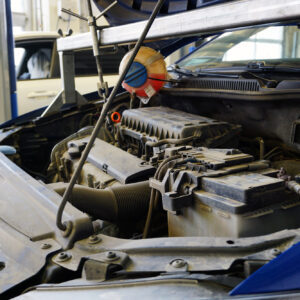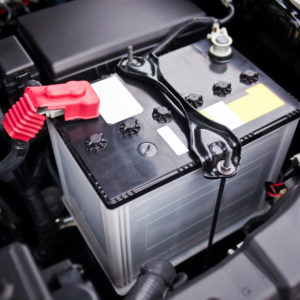Imagine driving about normally, when you notice lights flashing on your dashboard. It’s not just the check engine light. Other visuals like the speedometer and fuel gauge are also flickering, looking like strange disco lights on your dash.
Your vehicle’s dashboard holds a wealth of information. It provides real-time updates about things that are crucial to driving through gauges, signs, and other visuals. Seeing its lights flashing can be alarming because that can point to a wide array of issues.
The exact circumstances surrounding the flickering dashboard lights can help you pinpoint what’s wrong. Here are some possible causes behind flickering dashboard lights:
Why the Dashboard Lights Are Flickering While Driving
Dashboard lights flashing typically indicate that the dashboard isn’t receiving enough electrical power from the battery or alternator. You’ll need to determine which of the following issues is the culprit:
Weak Car Battery
A weak car battery can’t retain the right amount of charge for efficient operations. Its power tends to drop intermittently. This can cause your dashboard lights and other vehicle accessories to falter. Also note that a poor connection at the battery can also cause strange problems like this even if the alternator is working perfectly.
A typical car battery lasts three to four years. If your dashboard lights are flickering and it’s been a while since your last battery replacement, changing the battery might fix the problem.
Bad Alternator
The alternator produces electricity as the engine runs, recharging the battery and powering the vehicle’s electric components, including the dashboard lights. A failing alternator won’t be able to keep up with the power demand. The electrical components will drain the battery instead.
When the battery power runs out, features like the dashboard lights will start to malfunction. A few related symptoms you might notice include difficulty starting the vehicle, finicky accessories, and frequent engine stalling.
Usually, you’ll see a battery indicator light on or flashing when the alternator isn’t working, so pay attention to that and notice other electrical accessories like the A/C blower and the power windows. If they’re working slowly, it’s another indicator that the battery is draining. Eventually, the vehicle will stall and not start.
Inoperative or Malfunctioning Voltage Regulator
The voltage regulator’s job is to keep the electrical system running well without overcharging or undercharging the battery.
A faulty voltage regulator can’t control the voltage moving between the alternator and the battery. This leads to malfunctioning components, including flashing or dimming dashboard lights. Also, if the regulator fails so that the alternator is full-fielded, the battery and system voltage will go too high, and that can be an even bigger problem for modules and other components.
Failing Fuse Boxes
Bad fuses or bulbs are another possible cause for your vehicle’s flickering dash lights. Fuses protect the electrical system from too much current. Bad fuse panel circuitry may cause flickering lights, but typically fuses are either blown or they’re not.
Smart junction boxes and totally integrated power modules can cause issues as well and may need to be replaced. Be careful because some of these need to be programmed before they’ll work.
Why Your Car Won’t Start While Its Dashboard Lights Are Blinking
If your vehicle isn’t starting but you notice some dashboard lights are flashing, it’s likely connected to something amiss in one of the vehicle’s systems. It might be safe to assume it’s the battery, alternator, or voltage regulator if the battery dashboard light is flashing, or perhaps even an issue with some of the relays or fuse panel circuits.
While the battery is yet again the most likely culprit, other issues might be present if only one or two of the dashboard lights are flickering.
Dashboard lights have different meanings. The check engine light will have your mechanic scanning the powertrain control module (PCM) for diagnostic trouble codes (DTCs). That way, they can identify what might be causing your vehicle’s no-start condition.
Inoperative or malfunctioning parts and systems that might be triggering the dashboard lights include the following:
- Powertrain control module
- Wiring and electrical system
- Security system
You can look up the specific meanings of other dashboard lights in your owner’s manual. In general, the lights can help you identify which system needs attention.
Automakers can create customized dashboard lights, but a few universal ones include the check engine light, the battery check light, and the anti-lock brake system light.
Why Your Car Headlights and Dashboard Lights Are Flickering
If both headlights and dashboard lights are flickering, you can likely blame a faulty alternator, a bad ground, or a bad connection somewhere in the harness or in a switch. A bad alternator will struggle to provide consistent voltage for all of the vehicle’s electric systems, which includes all of the lights. It’s a problem you’ll notice especially well at night.
Flickering lights are a big safety hazard in the dark, so if this happens, be sure to bring your vehicle in for repairs as soon as possible.
What To Do If Your Vehicle’s Dashboard Lights Are Blinking
In the end, if all your dash lights are blinking, you can likely blame an issue with the vehicle’s battery or its related components.
Change the battery right away, or at the very least, have it checked if it’s been three to four years since your last battery replacement. If the dashboard lights are flickering while driving, then check out the alternator or voltage regulator.
If only a few dashboard lights are flashing, double-check that light’s meaning in the owner’s manual and address the problem accordingly. Familiarizing yourself with the lights and their meanings will help you diagnose issues you can fix yourself and those that need the professional touch.
Take your vehicle to a trusted mechanic if you aren’t too familiar with your vehicle’s systems. They can help you read and address any DTCs logged in the PCM.
Any information provided on this Website is for informational purposes only and is not intended to replace consultation with a professional mechanic. The accuracy and timeliness of the information may change from the time of publication.





















